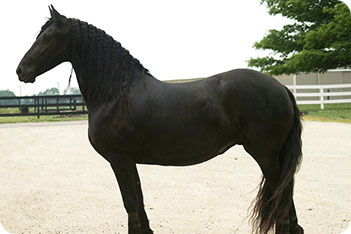
Mange
Vet, Horse First Aid
From: Equestrian and Horse | Horse Ailments

Mange
This is a parasitic infestation of the horses skin, caused by mites.
Mites ( Trombicula autumnalis)
Also known as Bracken Bugs and Harvest Bugs.
- Mites are around 0.2mm and can just be seen by the naked eye.
- Mites are most active during the hot dry summer months and can be found on long grass where they are picked up when contact is made.
- When the mite attaches itself to the horses legs it injects a fluid into the horses tissue and it is this that causes the horse irritation and discomfort.
- The mite will remain on the horses skin for a few days before dropping to the ground where it then burrows into the soil and matures into a adult after 6 weeks.
- Mature mites will then fed on insects and forage.
There are 5 main types of mange that can affect horses and all require careful and thorough treatment:
- Sarcoptic Mange - Sarcoptes scabiei var equi
- Psoroptic Mange - Psoroptes equi
- Chorioptic Mange or Leg Mange - Chorioptes equi
- Demodectic Mange - Demodex equi
- Straw Itch Mite or Forage Mite
At risk
Horses with deep feathering to their lower legs are particularly susceptible.
Symptoms
- Hair loss.
- Itching
- Stamping of the feet.
- Inflammation.
- Small lesions occur that begin crusting over within a day, they are often found around the horses lower legs.
Treatment
Treatment will vary so ask your vet for advise.
- Thoroughly scrub the area with an insecticide horse shampoo. Repeat this process every 12 to 14 days to ensure that the area remains as clean as possible. If symptoms persist then contact your veterinary surgeon.
- Application of a anti-inflammatory antiseptic cream or spray.
- The use of antibiotics may also need to be given depending on the severity of the infestation.
- An injection can also be given to destroy any deeply laid mange eggs buried within the horses skin.